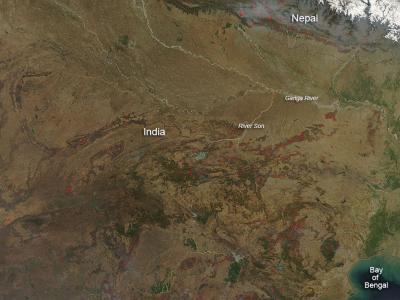Agricultural fires are set all over the world at different times to prepare the soil for the planting of new crops. In India and Nepal several dozens agricultural fires have been set and are burning in this image from April 06, 2013. This natural-color satellite image was collected by the Moderate Resolution Imaging Spectroradiometer (MODIS) aboard the Aqua satellite. Actively burning areas, detected by MODIS's thermal bands, are outlined in red.
